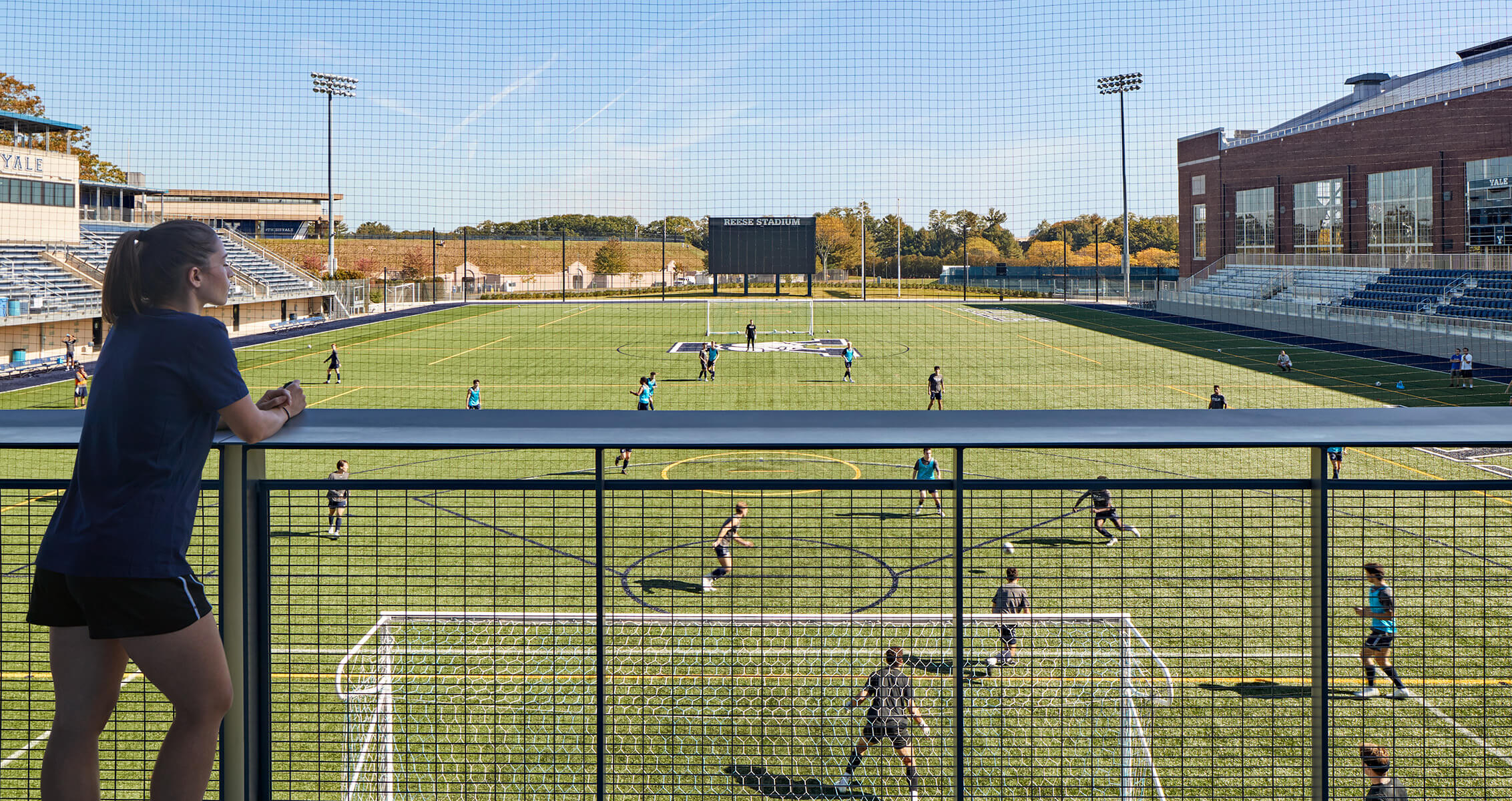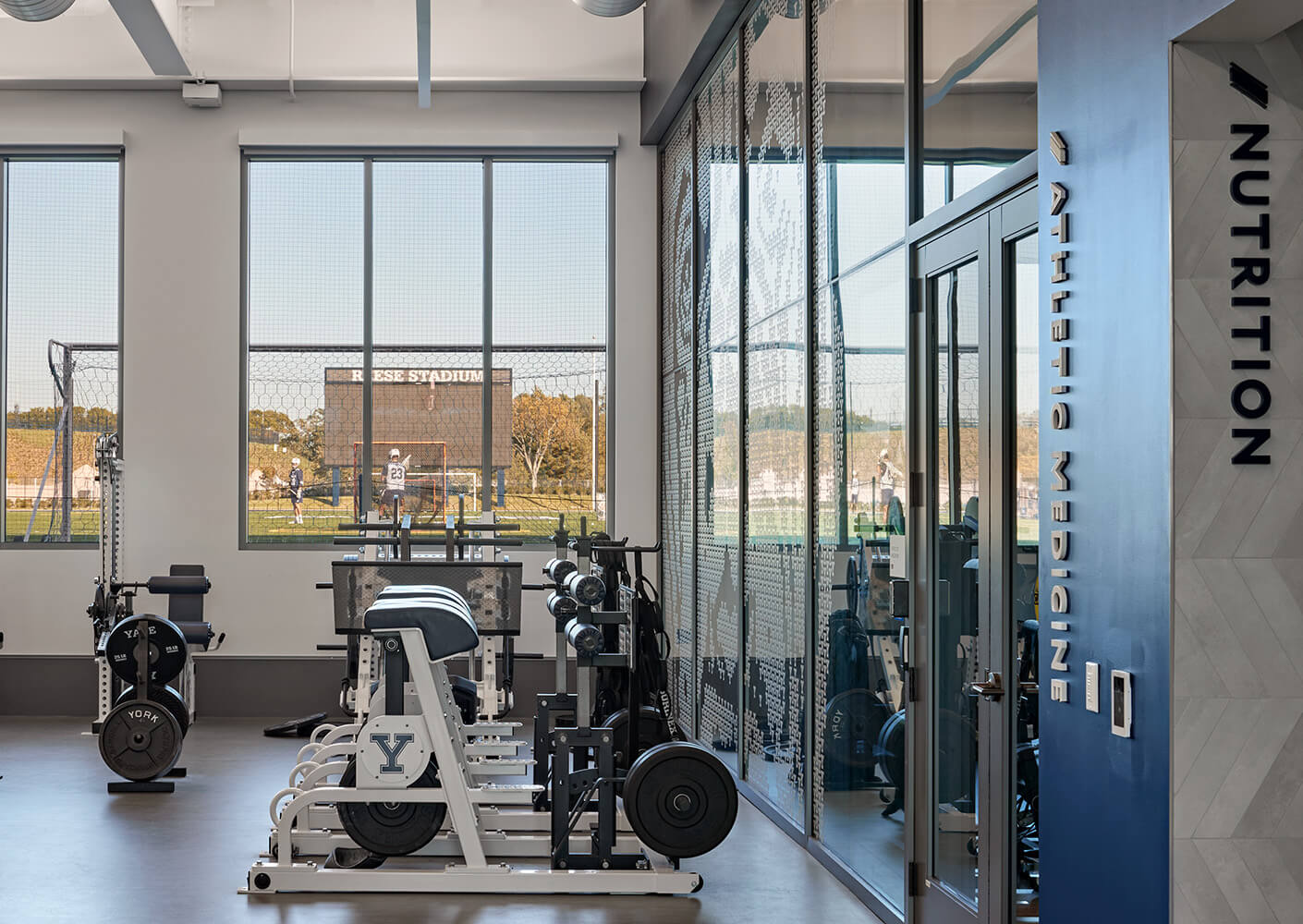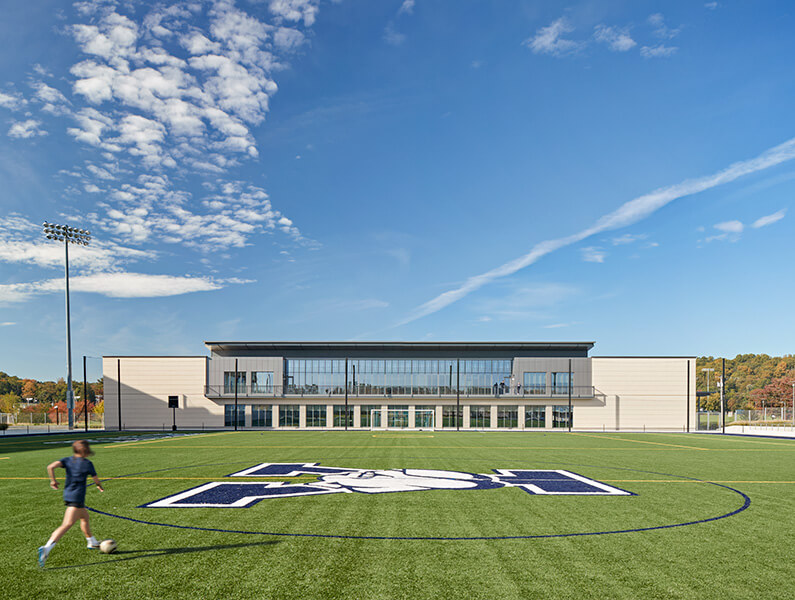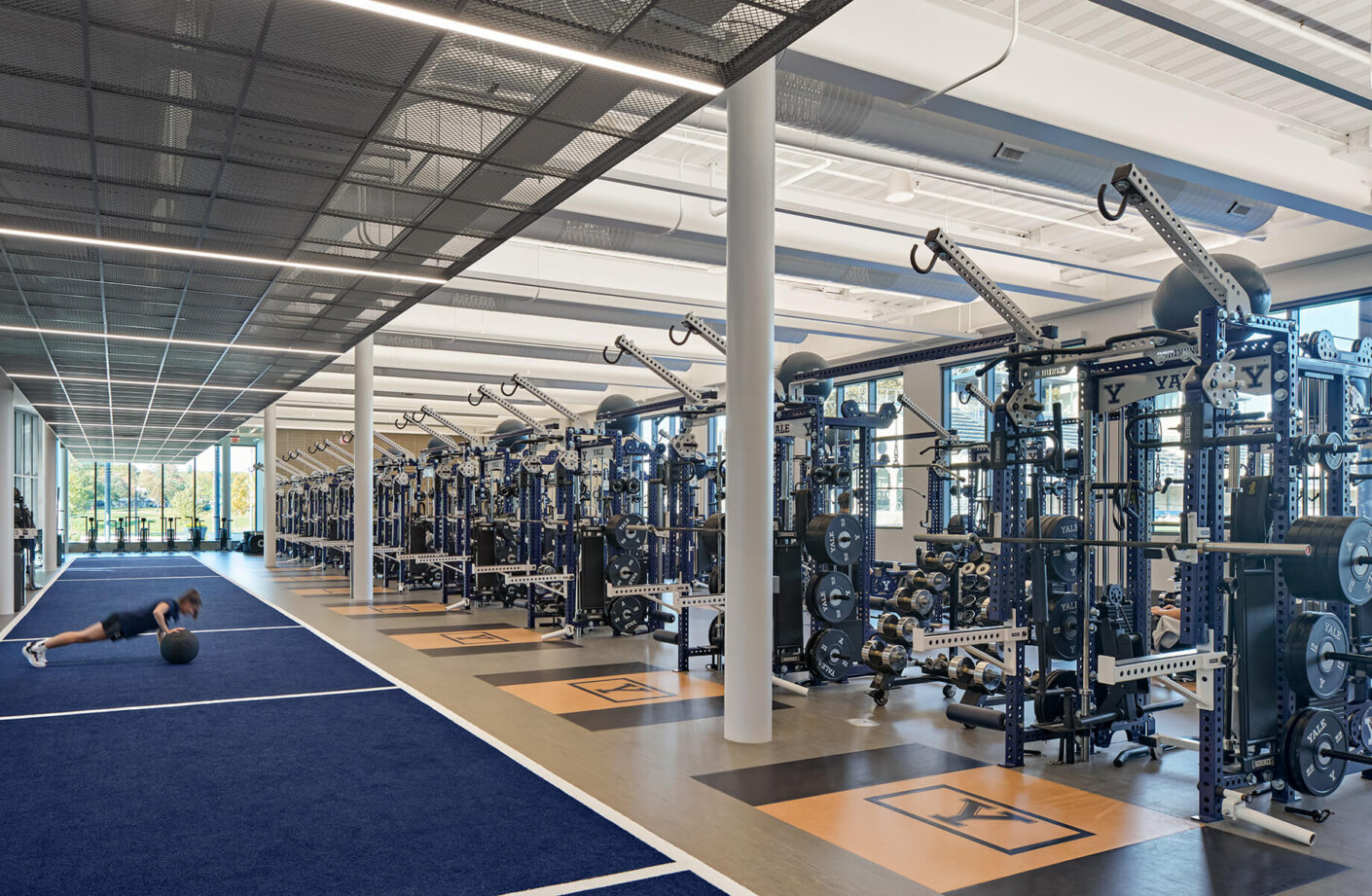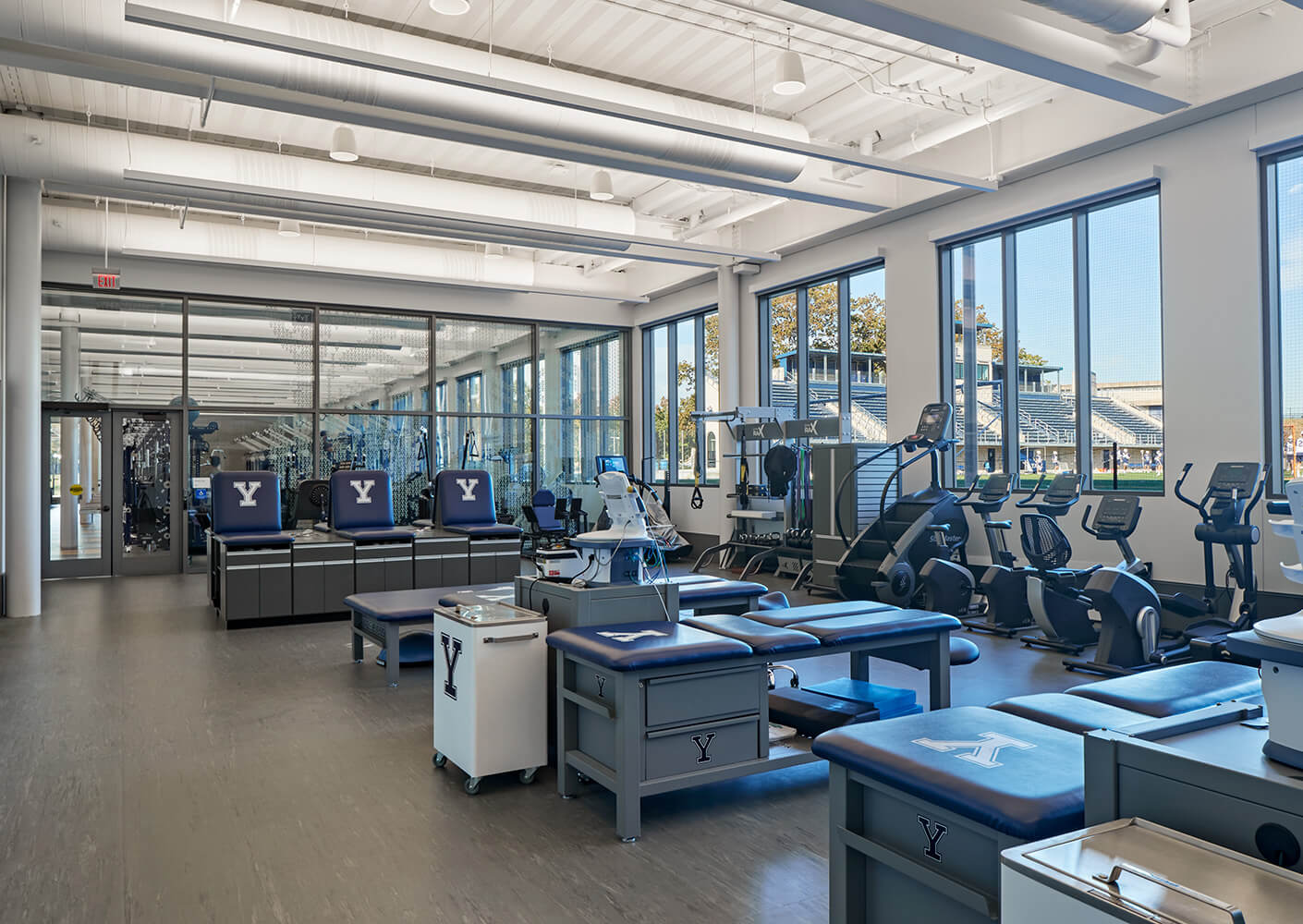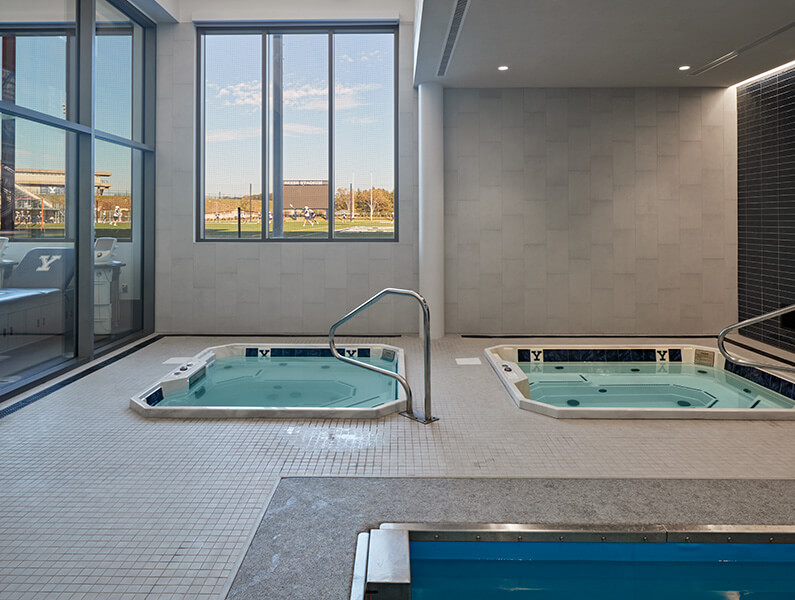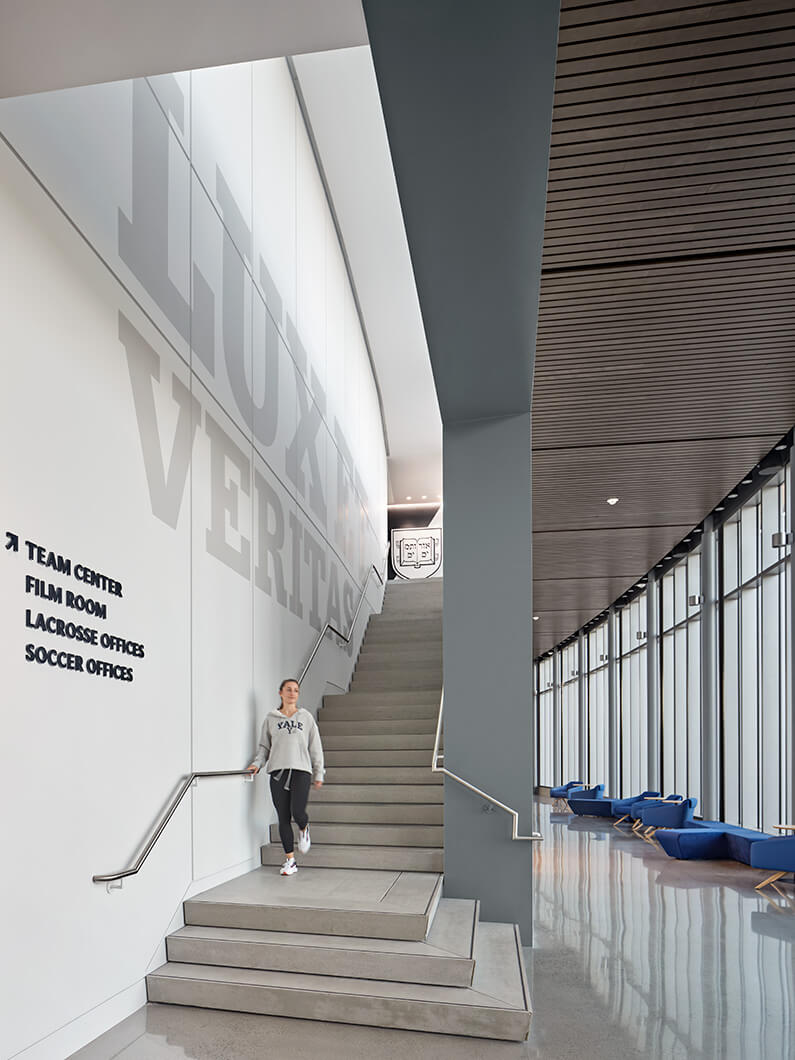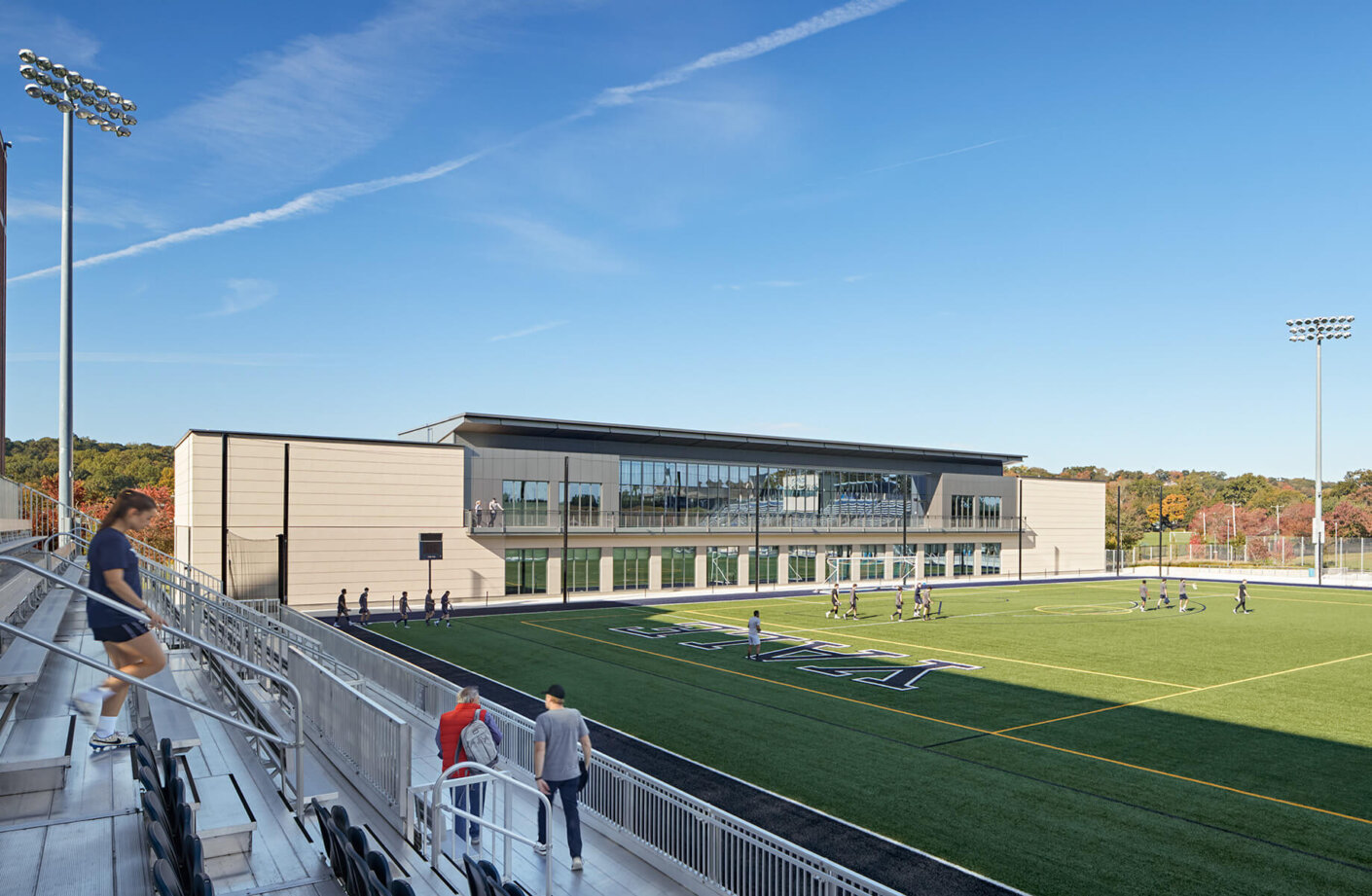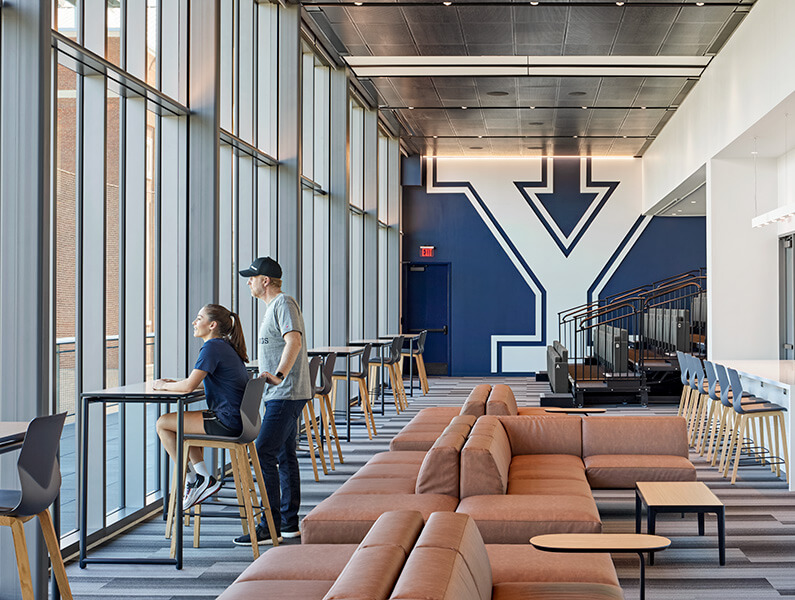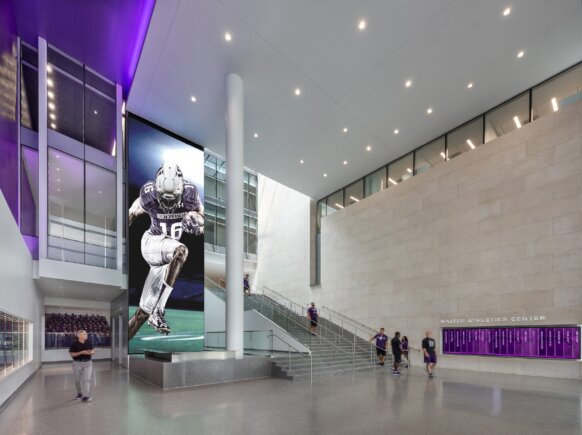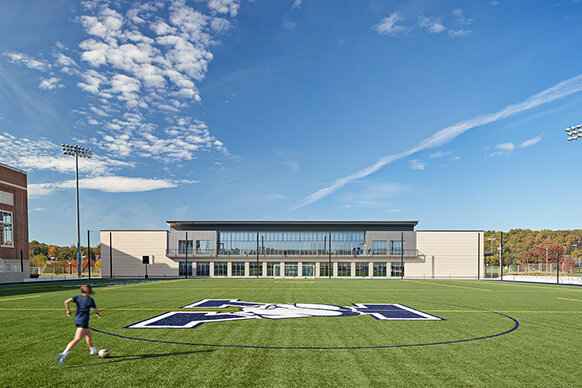By Jennifer Williams, AIA, IIDA, LEED AP, Well AP, Fitwel Ambassador, Senior Associate, Senior Interior Project Designer
Many NCAA programs are expressing a desire for a holistic approach to performance—one that thoughtfully integrates nutrition, mental health, sports medicine, hydrotherapy, diagnostics, sleep, recovery, and sport-specific strength and conditioning—all working in sync to improve athletes’ performance in the classroom and on game day.
Training facilities have evolved in response. Over the last decade, the facilities themselves have become a tool to better address the demands of players and coaches. So, how does the built environment fit into this picture? It’s an essential piece of the puzzle. Athletic directors, facility managers, training staff, and designers can enable their athletic facilities to do more for their athletes by considering three key design elements:
- Location, Location, Location
- Transparency: See and be seen
- Interior design: The finishing touch
